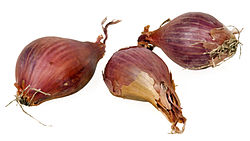– Description:
– Bulbs are underground storage organs with leaf bases that contain food reserves.
– The center of the bulb has a growing point for new stems and leaves.
– Tunicate bulbs have dry outer scales for protection.
– Bulbous plants cycle through vegetative and reproductive growth stages.
– Environmental conditions trigger transitions between growth stages.
– Plants that form bulbs:
– Plants with underground storage organs are called geophytes.
– True bulbs are mostly monocotyledons like Amaryllis and Lily.
– Some Iris species and a few oxalis species also produce true bulbs.
– Epiphytic orchids form above-ground storage organs called pseudobulbs.
– Members of the Amaryllidaceae and Liliaceae families are known for bulb formation.
– Bulbil:
– A bulbil is a small bulb that can develop into a larger bulb.
– Renewal bulbs replace the original bulb with moderate-sized bulbs.
– Increase bulbs develop on leaves inside a bulb or on underground stems.
– Certain plants like lilies and onions produce bulbils for propagation.
– Ferns and wild garlic also produce bulbils for reproduction.
– See also:
– List of flower bulbs
– References:
– Bell, A.D. 1997. Plant form: an illustrated guide to flowering plant morphology.
– Mishra, S.R. (2005). Plant Reproduction.
– Ellis, Barbara W. (2001). Bulbs.
– Advances in bulb crops (PDF).
– Hartmann, Hudson Thomas; Dale E. Kester (2002). Hartmann and Kesters Plant Propagation: Principles and Practices.
In botany, a bulb is a short underground stem with fleshy leaves or leaf bases that function as food storage organs during dormancy. In gardening, plants with other kinds of storage organ are also called ornamental bulbous plants or just bulbs.


